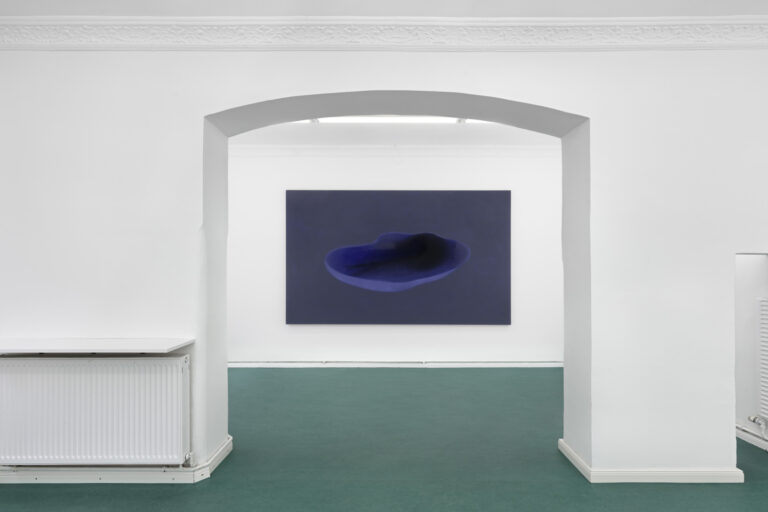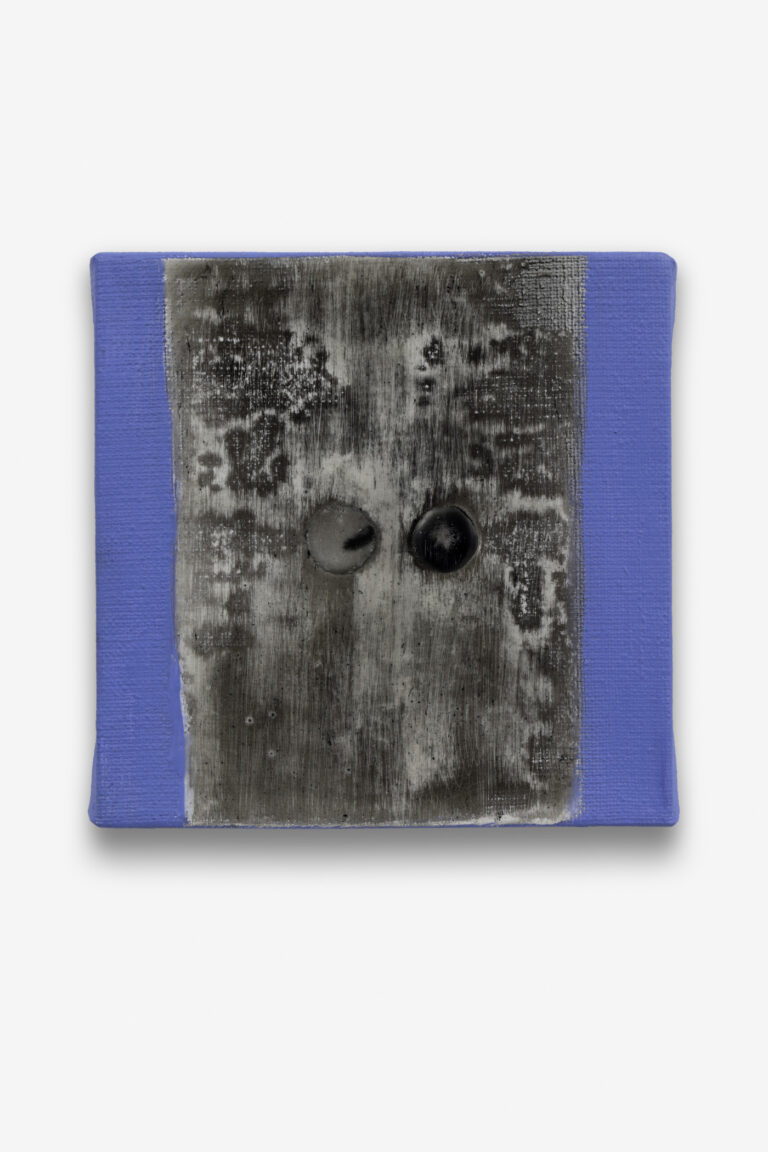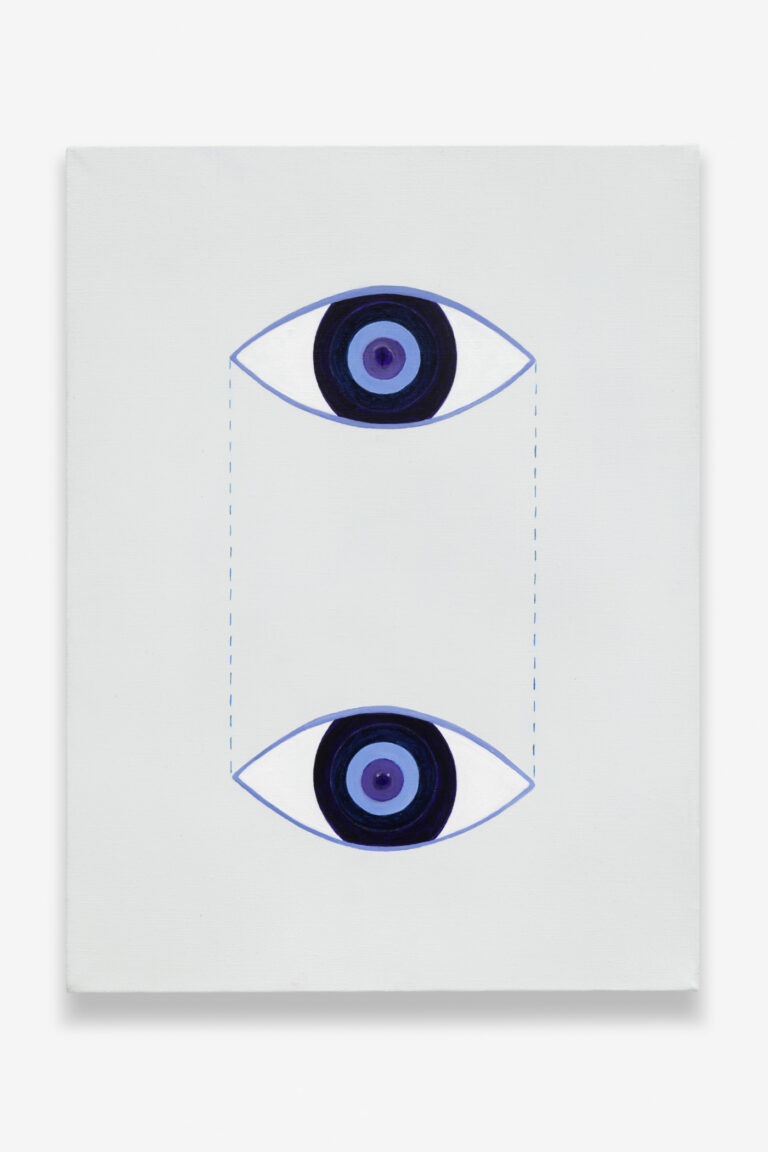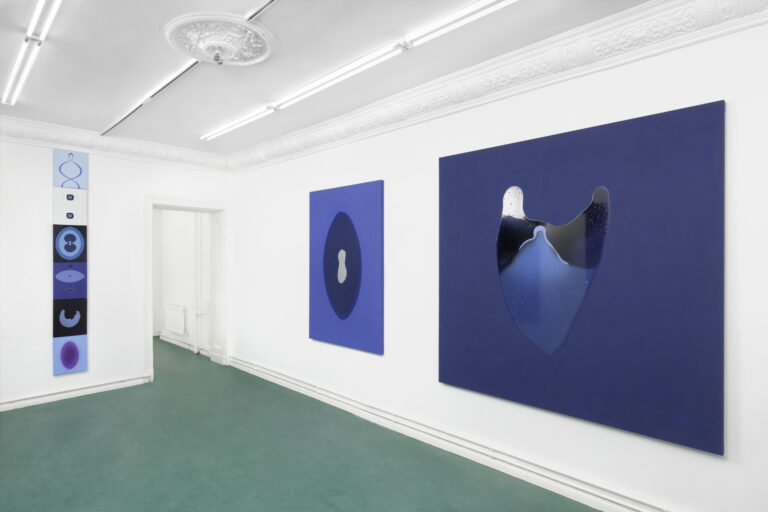Kami Mierzvvinsk
Where the Night Softens
13 MAR until 13 APR 2025
Galerie Noah Klink is proud to present Where the Night Softens, the first solo exhibition in Berlin by Polish artist Kami Mierzvvinsk.

Installation view
Courtesy of the artist and Noah Klink.
Mierzvvinsk approaches painting as a tool for connecting with something beyond normal human perception, an ineffable and infinite reality that reveals itself through their creative practice. The paintings are created through a ritualistic process in which the artist views their body as a conduit for visualizing this intangible spiritual world. During an extended trance-like state, Mierzvvinsk connects with an internal energy – what they refer to as an alchemical process – to create the initial sketches as well as the large-scale works. This process of transmutation is at the core of Mierzvvinsk’s practice, and their paintings reflect a transcendental dialogue rather than a singular directive. The artist’s performative creative process results in minimalist organic forms that show rather than tell – a void, a portal, a spiritual residue, an open space for our own projections? Though largely monochrome, the paintings are anything but flat. They drip, morph, and meld as if they briefly capture a constant state of flux.
In Where the Night Softens, Mierzvvinsk has created a new body of work that serves as an ode to the mystique of night, the sense of peace and security it can offer as well as the access it allows to our deeper states of consciousness. Similar to Tantric and western spiritualist painting traditions, Mierzvvinsk is inspired by the metaphysical potential of artistic creation. In this new collection, they combine spirituality and materiality, brought together by their own bodily movements, into a cohesive whole.

Kami Mierzvvinsk,
2021 – 2024
Mixed media on canvas
(MIERK-2024027)
Courtesy of the artist and Noah Klink.

Kami Mierzvvinsk
NE.ADBU, 2025
Mixed media on linen canvas
(MIERK-2025002)
Courtesy of the artist and Noah Klink
The arrangement of the paintings in the gallery come together to form a contemplative space free from religious structures. While the works stand on their own, the installation as a whole creates an atmosphere of reverence. The mostly large-scale paintings feature central amorphous figures, emerging or receding, into deep yet vibrant blues, blacks, and purples reminiscent of the colors of the sky and the distant space beyond. As Mierzvvinsk themselves said, “Nothing is more noble than the first bright blues of the morning.”
And yet, the artist adamantly rejects a set interpretation for the works, echoed in the opaque titles. The paintings in Where the Night Softens are both the result of and an invitation into contemplative practice. As such, they avert directives and rather encourage viewers to step into a relationship with something beyond the mundane. In their refusal of set interpretations, Mierzvvinsk offers us an opportunity for our own inner exploration.

Installation view
Courtesy of the artist and Noah Klink
“Can this be read as a critique of human divisions ? Certainly, that is one of my thoughts. Is it about the fluidity of the soul? Absolutely, it carries many of my philosophical reflections. Is it a mystical phenomenon? Yes, profoundly and intricately developed. I prefer to give the viewer the space to explore their own discoveries and values. I don’t believe in explicitness – the image is the way, not the end point.”
Heather Jones
Kami Mierzvvinsk lives and works in Warsaw. They have completed their MFA at the Academy of Fine Arts and Design in Wroclaw, Poland. Recent solo and group shows include From Blood, ZOYA Museum, (Modra, SK, 2025); Seascapes, Galerie Noah Klink (Berlin, DE, 2024); Edges of the Worlds, B93 (Enschede, NL, 2023); My Body Is Your Body, Braunsfelder (Cologne, DE, 2023); Listasyning, Skrufan (Eyrarbakki, IL, 2022); My problem is a woman’s problem: voices of the younger generation, Centrala Spaces (Birmingham, UK, 2022); Milky Way, MIA Gallery (Wroclaw, PL, 2021); Ewa Partum. My problem is a woman’s problem, Fabryka Sztuki (Łódź, PL, 2021); Tolerance(s), ArtiFactory, Eos Gallery (Athens, GR, 2021); Life isn’t everything, Contemporary Art Gallery MD_S (Wroclaw, PL, 2020). Their works are in the collection of ICA Miami.
